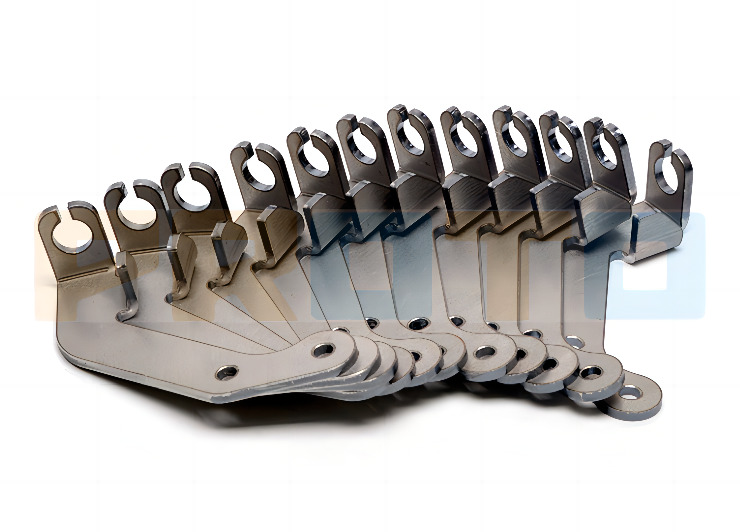Heat treatment is a common conditioning process in which aluminum alloys are heat treated, which changes the material properties of many metals at a chemical level, such as increasing hardness and strength. Untreated aluminum is a soft metal, so in order to achieve the specified properties and performance, it needs to go through some kind of conditioning process. The process is represented by a letter name appended to the end of the grade number.

Heat treatment of aluminum
2xxx, 6xxx, and 7xxx series aluminum can all be heat treated to increase strength and hardness; other 3xxx, 4xxx, and 5xxx aluminum alloys can only be cold worked to increase strength and hardness. Heat-treated aluminum alloys will be identified by adding different letter names (temper names). These names are:
F: Free processing state, suitable for products with no special requirements for work hardening and heat treatment conditions during the molding process. The mechanical properties of the products in this state are not specified.
O: Annealed condition, suitable for processed products that have been fully annealed to achieve minimum strength. Annealing results in a material that is easier to process, tougher and more ductile.
H: Work hardening state, suitable for products whose strength is increased through work hardening. After work hardening, the product can undergo additional heat treatment that reduces the strength. The H code must be followed by two or three Arabic numerals to indicate the degree of heat treatment. Type and hardness.
W: Solid solution treatment state, an unstable state, only applicable to alloys that have been naturally aged at room temperature after solid solution heat treatment. This status code only indicates that the product is in the natural aging stage.
T: Heat treatment state, suitable for products that have reached a stable state through work hardening after heat treatment. The number after the “T” indicates the details of the heat treatment process. For example, Al6061-T6 is solution heat treated (held at 980 degrees Fahrenheit and then quenched in water to cool quickly) and then aged by holding it at a temperature between 325 and 400 degrees Fahrenheit
Aluminum surface treatment process
Surface treatment is a mechanical and chemical treatment that can form a protective layer on the surface of the product to protect the body, increase the corrosion resistance and decorative properties of the workpiece, thereby enhancing the value of the product. During industrial processing, there are many surface treatment methods for aluminum alloys, including sandblasting, passivation, coloring, spraying, anodizing, drawing, polishing, etc.
Sandblasting:
The process of cleaning and roughening metal surfaces under the impact of high-speed sand flow. This aluminum alloy surface processing method can achieve a certain degree of cleanliness and different roughness on the surface of the workpiece, improve the mechanical properties of the workpiece surface, thereby improving the fatigue resistance of the workpiece, increasing its bonding force with the coating, and prolonging the service life of the workpiece. The durability of the paint is also beneficial to the smoothing and decoration of the paint. We often see this process in various Apple products, and it is increasingly being adopted into existing TV cases or mid-frames.
Passivation:
Passivation treatment of aluminum and aluminum alloys produces a metal passivation film on the metal surface to slow down the corrosion rate of aluminum and aluminum alloys.
Coloring:
Generally speaking, there are two types of aluminum alloy coloring treatments, one is oxidation coloring and the other is electrophoresis coloring. Aluminum anodizing and coloring can form various colors, such as black commonly used in optical equipment, golden yellow commonly used in commemorative medals, etc.
Spray:
It is generally used for external protection and decoration of equipment, usually on the basis of oxidation. In order to improve the bonding force between the coating and the workpiece, phosphating, passivation, chemical oxidation, etc. are generally performed before spraying.
Anodizing:
The process of forming an oxide film on the product due to the action of applied current under the corresponding electrolyte and specific process conditions. The oxide film can solve the hardness, wear resistance and other defects of aluminum, and can also extend the service life of aluminum and increase its aesthetics.
Brushed:
Lines are repeatedly scraped on the surface of the aluminum alloy with sandpaper. The drawing patterns are diverse and can be divided into straight lines, random lines, spirals and threads. The metal brushing process can clearly show every trace of the filaments, making the hair shiny in metallic matte. The products have both a sense of fashion and technology.
Polishing:
Polishing uses mechanical, chemical or electrochemical methods to reduce the surface roughness of the workpiece to obtain a bright and smooth surface. The polishing process is mainly divided into: mechanical polishing, chemical polishing, and electrolytic polishing. After mechanical polishing and electrolytic polishing, the aluminum alloy surface processing parts can be closely attached to the stainless steel mirror surface, giving people a high-end, simple and fashionable future feel.
With excellent machinability and various available alloys and processing methods, aluminum alloy materials are increasingly used in non-standard fields.
PROTO MFG provides a wide range of manufacturing capabilities and other value-added services for all of your prototyping and production needs. Visit our website to learn more or to request a free, no-obligation quote.